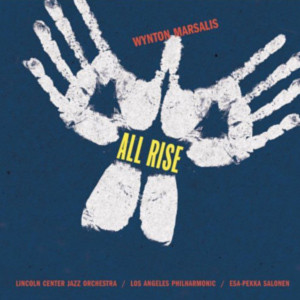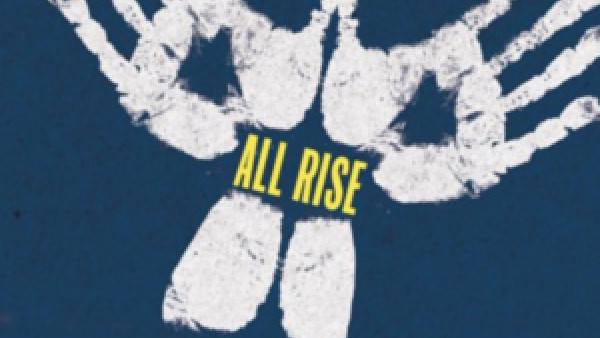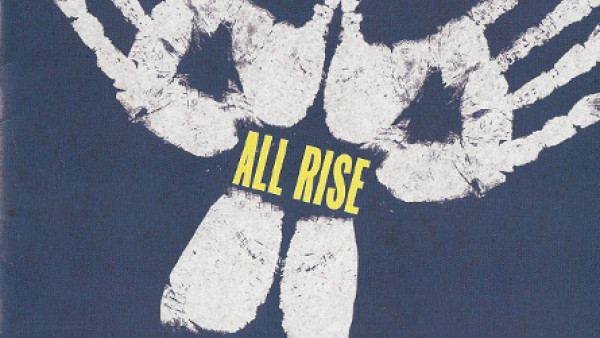A Self-Conscious Celebration of Life in ‘All Rise’
Anyone who hadn’t before appreciated the phenomenal resolve of New Yorkers does now, watching the city pull together with heroic spirit in the wake of its terrible tragedy. That ingrained New York confidence may also explain why the New York Philharmonic developed an extreme case of millennium fever.
In the fall of 1999, the orchestra accepted Disney money to present two sentimental, overblown epic symphonies about hope by young American composers. It tried again, without much success, to capture an adult millennial vision through seven shorter new commissioned works. And the orchestra welcomed 2000 with a New Year’s Eve premiere of a full-blown inspirational jazz symphony, “All Rise,” by Wynton Marsalis, which the orchestra’s music director, Kurt Masur, had spent years doggedly trying to persuade the trumpeter to write.
“All Rise” is a massive two-hour symphony with a mission. “It is about the rise from destruction to creativity, about drawing joy out of tragedy and refusing to be beaten down,” Marsalis said Thursday night to the audience at the Hollywood Bowl, as preface to the symphony’s West Coast premiere.
Originally scheduled as the celebratory closing event of the Los Angeles Philharmonic’s summer season, the score suddenly had new weight on its shoulders. Some in the audience carried large American flags. Esa-Pekka Salonen, who conducted, announced that the evening was dedicated to the memories of the victims of Tuesday’s bombings and that a portion of the proceeds from the concert would be donated to the American Red Cross Disaster Relief Fund.
But both Salonen and Marsalis made clear that this concert—which brought together the Lincoln Center Jazz Orchestra, the Philharmonic, the Morgan State University Choir, the Paul Smith Singers and the Northridge Singers—was not to be a solemn occasion. After an emotional rendition of the National Anthem and a moment of silence, we were roused to celebrate life.
As a jazz musician and a composer, Marsalis has in him, I think, the talent and the technique to realize his powerful aims. And there can be little doubt that the tireless trumpet player, bandleader, educator, polemicist, media maven and artistic director of Jazz at Lincoln Center has the ambition. He has a powerful command of dance forms and the blues, and the brilliance to reflect the world in them.
“The Blues is an attitude towards life, which celebrates transcendence through acceptance of what is,” Marsalis wrote in a compelling program note. “Ain’t no use in cryin’ over spilled milk when you could be cleaning it up. It’s gonna spill all over again, you gonna clean it again…. “
Marsalis uses the English language and the language of jazz wonderfully. He begins with the basics, whether it is the 12-bar blues structure or commonplace imagery, relying upon them to hold elemental truths from which he can take imaginative flights of fancy. In “All Rise,” he grounds himself in a long-range blues plan, with 12 movements, structured in four parts. In the early sections of the symphony, Marsalis is concerned with the varieties of human experience, with the ways in which we deal with chaos, frustration, death, knowledge. His release is in the profound exhilaration of dance.
Those last movements are inventive and infectious. And there are many impressive musical moments earlier on, especially in his evocation of a New Orleans funeral, or in his ability to ingratiate a sweet, simple swing tune into what feels like complex lapping waves of a whole, inviting swing ocean.
But there is no reason why the symphony orchestra should be Marsalis’ instrument. The orchestra weighs him down and sometimes comes close to sinking him altogether. Most of the 12 movements begin with self-conscious, near-academic orchestral exercises, with Stravinsky as the starting place. Then in the middle the music comes alive as the 15 members of the Lincoln Center Jazz Orchestra take over.
There are a few attempts at a dialogue between individual classical musicians and jazz soloists, but they are stiffly conventional, with the sense that they don’t speak the others’ language very fluently and so must limit what they can say to each other. In the end, in this long, meandering score, just about everyone is held back.
The superb jazz orchestra is a band of soloists who rarely get a chance to do much soloing. For that minute of two when Marsalis stands and explodes in a spectacular trumpet solo, it feels as if he were breaking out of a huge orchestral prison. The singers were nothing if not enthusiastic in the seven movements in which they participate, but they too were rarely integrated into the whole. Their moment came at the end, when they opened up in a hand-clapping gospel-inspired finale.
The performance was likely as good as this piece could get. Salonen showed an easy mastery of its rhythmic vitality, and the Philharmonic sounded game. But the Bowl didn’t make for a level playing field. Loud, coarse amplification flattened Philharmonic and choruses into ugly, lo-fi one-dimensionality, whereas the jazz band, comfortable with amplification, sounded far better.
Nor did the mood at the Bowl appear much different from other nights. The crowd of 5,520 may have been slightly more restrained than usual and unified in its standing ovation, but champagne was still sipped, cell phones talked on, wine bottles dropped throughout the concert. Helicopters swooped overhead stealing music. A box full of bored listeners chatted the night away. An entrepreneur took advantage of the occasion by selling plastic dashboard flags for $5. Not everything in America has changed.
by Mark Swed
Source: Los Angeles Times



